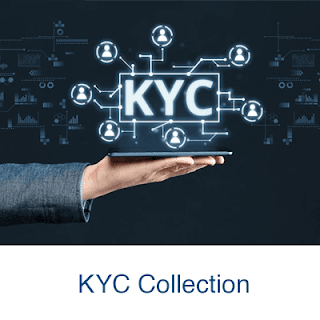Why Does Your Company Need to Comply with KYC Procedure?
Requiring and verifying KYC documents is becoming standard practice in many industries. This is unsurprising since KYC Verification is central to a global legislative effort to verify individuals to combat money laundering and terrorist financing.
No matter what industry you're in, one thing is clear: the more hoops a customer jumps through to get your services, the more likely they will drop out. This is why companies do their best to remove barriers and friction through a seamless customer onboarding process.
But what if the government imposes these barriers and punishes them harshly? If so, your goal is to thoroughly collect all your customers' KYC documents and provide a seamless onboarding experience.
This post will show you how to request and verify your KYC Verification documents quickly, easily, and competently to protect your business from criminal activities or avoid massive fines and legal penalties.
In the world of KYC and compliance, there are several definitions and concepts that you need to know. Let's start from the beginning.
What is KYC?
Before delving into the KYC Verification and documents in detail, it is essential to understand why (and how) these processes were created. KYC (Know Your Customer) is a globally accepted set of practices, laws, and regulations for businesses to identify customers and prevent money laundering and fraud.
What is Counter-Terrorism Financing (CFT)?
The Terrorist Financing Regulations (TCF) are part of the TFA regulations. It is designed to give financial institutions and other companies tools to combat suspected terrorist financing activities.
During the Know Your Customer (KYC) process, we verify who your customer is to comply with regulations and protect your business. Actions against the financing of terrorism
In addition to complying with AML and CFT regulations, the KYC Collection process aims to identify customer needs. This way, we can deliver our services with minimal risk to everyone involved. KYC helps companies prevent money laundering.
stages of money laundering
Level 1. Investment
The goal of the money launderer in this stage is to obtain illicit funds from the initial source.
They invest money in the legitimate financial system by allocating small amounts or depositing cash in safe financial instruments.
Step 2. Layering
Then the layering process begins. Criminals want to make tracing the money as tricky as possible so laundering techniques can be very sophisticated. Regardless of the method, layering aims to disguise the money as a regular payment and legalize it as quickly as possible. This step is commonly used by casinos, cashier companies, foreign investments, etc. it includes.
Step 3. Completely
For example, money launderers divert money back into the legitimate economy and invest large sums in real estate, cars, and luxury goods.
Strict compliance with AML regulations and implementing a KYC process is essential to prevent your business from being used as a money laundering method without your knowledge.
Identifies people requesting financial, banking, or property management services.
Monitor accounts and activity, conduct risk assessments, and report suspicious transactions and transactions.
Find the best service you can offer to each customer. Generally, KYC processes are designed to comply with two international financial crime regulations: Anti-Money Laundering (AML) and Countering the Financing of Terrorism (CFT).
Steps for Effective KYC Compliance in Your Company
Using KYC-compliant software
Using the proper technique is an essential part of any strategy. When auditing, investigators want to understand how you collect, store and retrieve KYC data and documents.
Demonstrating compliance or finding specifics will be challenging if you continue relying on spreadsheets and emails. Therefore, customer onboarding software is required to complete the KYC activation.
It allows you to set up an enterprise-wide system for onboarding new customers and also serves as a central repository for all customer KYC documents, forms, and records. Composition of supporting KYC documents/materials
Before you start designing your workflow, gather your team and review all the resources related to KYC management.
The list of KYC documents required depends on the type of customer you have created (even if you work with individuals or companies) and the country you live in. Below is a standard list of KYC documents.
- passport
- registration card
- driver's license
- voluntary letter
- Statement
- Certificate of establishment
- Ivan
- Any document that requires a signature
If you have PDF forms, organize them into folders and prepare them for signing during the KYC process.
KYC Workflow Mapping
A KYC workflow can easily involve multiple stakeholders. To start the KYC process, use the Workflow Builder to record all the steps.
Whimsical is an easy-to-use tool for designing KYC workflows on behalf of Clustdoc's Enterprise customers.
KYC Workflow
How to Create a KYC Watchlist
Create a digital inventory of your KYC documents
Given the purpose of the KYC process, it's no wonder it requires a lot of work (and paperwork) for customers, as we've seen before. Unfortunately, there is no way out.
What if a new client inquires about your services and sends you a long email showing how long it took to find, scan and email a document? Do you usually look back?
Wouldn't they need your unique services? Can I find someone to make the KYC activation process faster and easier? And I find that person. What if someone told you it could be you?
It can make the KYC process faster and easier. Speeding things up and removing friction can reduce (complexity) for new customers. When frustrated with how long it takes to get the ball rolling, you can be someone business people can rely on. All you need is KYC-enabled software.



Comments
Post a Comment